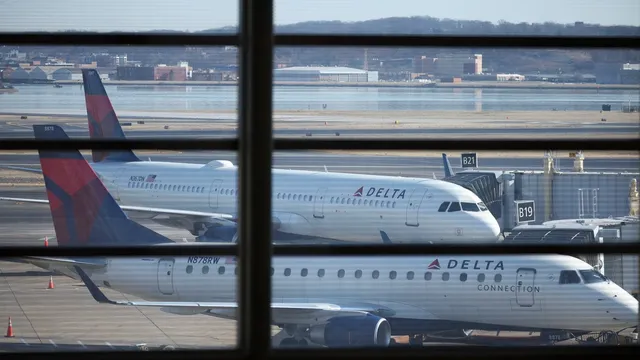
Delta passengers stranded overnight due to customs issue in Alabama
2025-04-13 13:59- Two Delta flights from Mexico diverted to Montgomery, Alabama due to severe thunderstorms.
- Passengers were stranded on the tarmac overnight as the airport lacked customs facilities.
- Delta Air Lines is refunding affected customers and reviewing their procedures to prevent future incidents.
Express your sentiment!
Insights
In the United States, two Delta Air Lines flights from Mexico were forced to divert to Montgomery, Alabama, due to severe thunderstorms impacting their original route towards Atlanta. Flight DL 1828, departing from Los Cabos, and Flight DL 599 from Mexico City both arrived at Montgomery Regional Airport on a Thursday evening, around 9:30 PM local time. However, the airports’ lack of U.S. Customs and Border Protection (CBP) facilities caused a significant delay for the passengers, as they could not disembark until customs personnel were available. Due to the inclement weather, all nearby airports with appropriate customs staffing, such as Birmingham-Shuttlesworth International Airport, were also rendered suitable for landing, prolonging the situation. Passengers were forced to remain on the planes through the night, with limited amenities such as cookies and water provided to them. Throughout this time, the crew was aware that the flights had exceeded the allowable working hours as a result of the diversion and were focused on ensuring the safety and comfort of the passengers. It wasn't until approximately 5:15 AM that the passengers were finally permitted to disembark, albeit under supervision and in groups. Upon entering the airport, they then faced further delays before boarding alternative flights to Atlanta. This ordeal lasted significantly longer than anyone had anticipated, leaving travelers frustrated as they sought to resume their journeys. Many passengers expressed their disappointment, noting the lack of timely communication and support from the airline during this unexpected event. Delta Air Lines subsequently issued an apology for the circumstances faced by the passengers, admitting that they did not meet their usual standards of customer service. The airline stated that they would take necessary steps to prevent such issues from reoccurring in the future and reflected upon their response during this incident to make improvements. In light of this experience, Delta has committed to refunding all affected travelers and reassessing their contingency practices for weather-related diversions.
Contexts
Weather plays a crucial role in shaping the operations of airlines across the United States, significantly impacting flight schedules, safety measures, and passenger experiences. From thunderstorms and heavy winds to snowstorms and extreme temperatures, various weather phenomena can lead to delays, cancellations, and even diversions. As airlines strive to maintain operational efficiency and ensure passenger safety, they often have to adapt their plans and resources in response to weather-related challenges. This adaptability is vital, especially during peak travel periods or when unexpected weather events strike, requiring airlines to implement strategic adjustments to their operations in real-time. In the United States, summer thunderstorms are particularly notorious for their disruptive effects on airline operations. These storms, often accompanied by lightning, strong winds, and heavy rain, can create dangerous flying conditions. Airports may temporarily close runways or delay flights to ensure safety, leading to a cascade of subsequent delays and cancellations throughout the network. During winter months, snow and ice create different challenges for airlines, including the need for de-icing procedures, which prolong turnaround times and reduce available flight slots. Understanding regional weather patterns is therefore essential for airlines to optimize their schedules and allocate resources efficiently. Airlines implement advanced technology and robust forecasting systems to monitor weather patterns and make informed decisions about their operations. By utilizing weather data analytics, airlines can predict the likelihood of weather disruptions and prepare for them by reallocating aircraft, altering flight schedules, or communicating with passengers about potential delays. Moreover, many airlines have invested in planning tools that simulate how different weather scenarios will affect their operations. This proactive approach not only enhances safety but also improves overall customer satisfaction, as passengers are better informed and have a clearer understanding of potential changes to their travel plans. Despite the advancements in technology and data analysis, weather-related disruptions remain a persistent challenge for airlines. The ability to respond efficiently to these challenges directly influences operational performance and customer trust. Additionally, more extreme weather events linked to climate change may further exacerbate these challenges in the coming years. Consequently, airlines are increasingly focusing on developing contingency plans and investing in infrastructural improvements at airports to mitigate these impacts. As the aviation industry continues to evolve, fostering a strong understanding and adaptive strategies for weather-related disruptions will be paramount in ensuring stable and reliable airline operations across the United States.